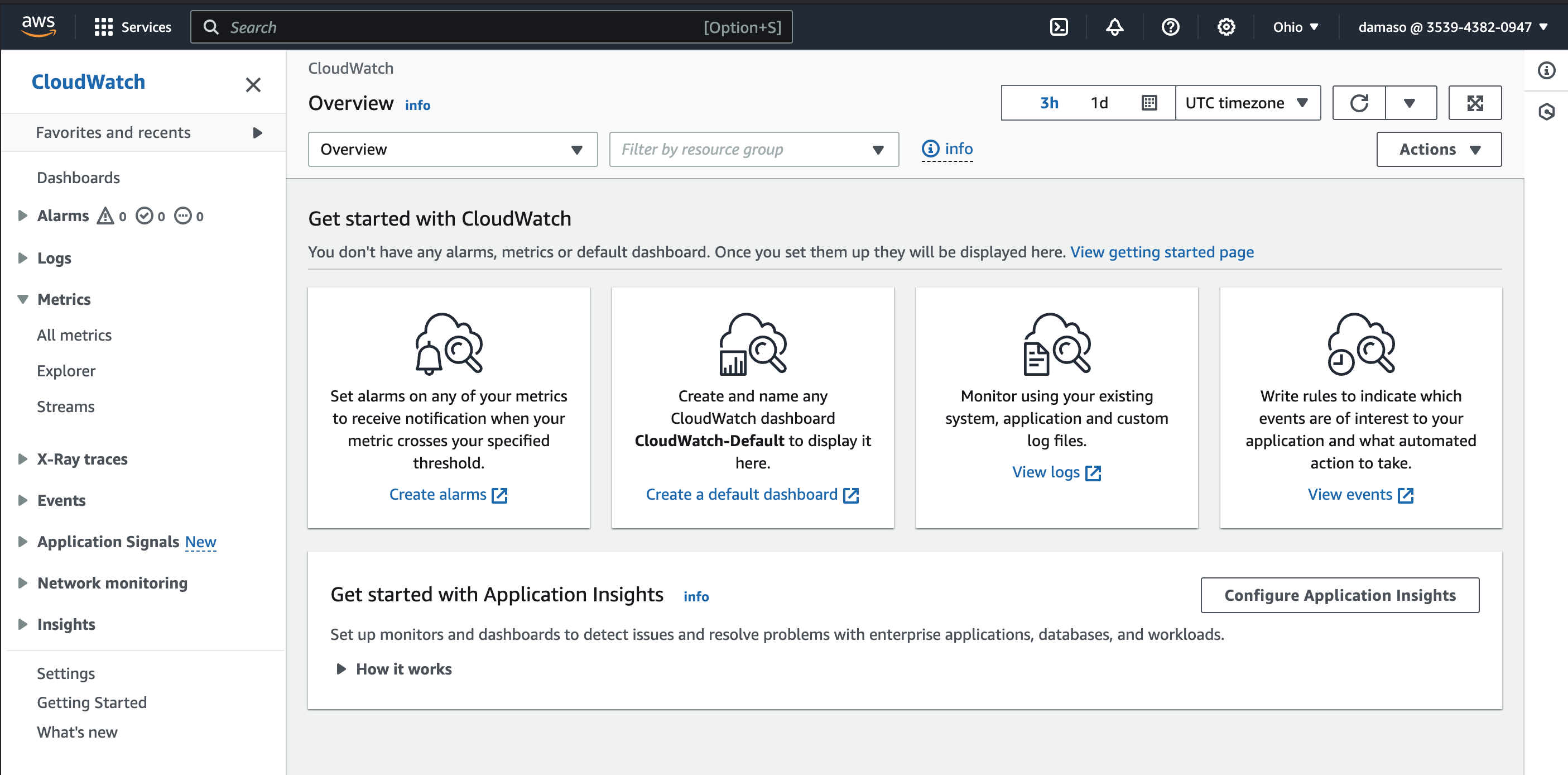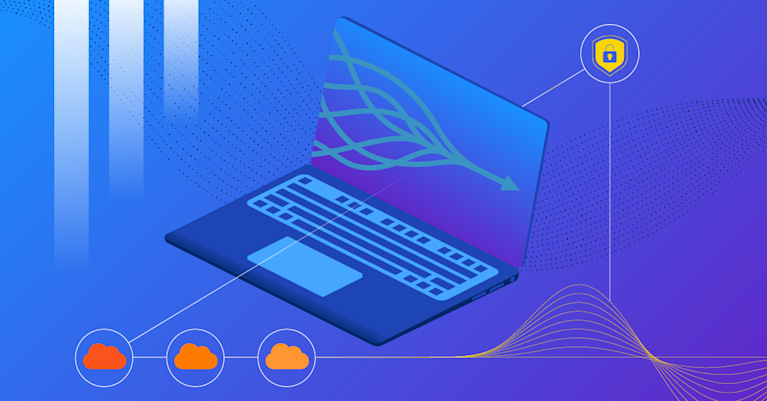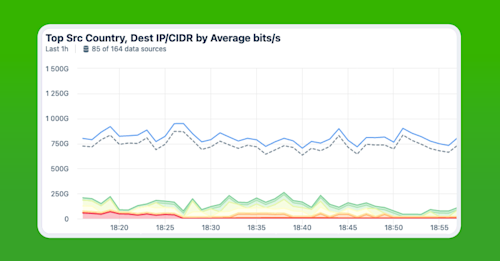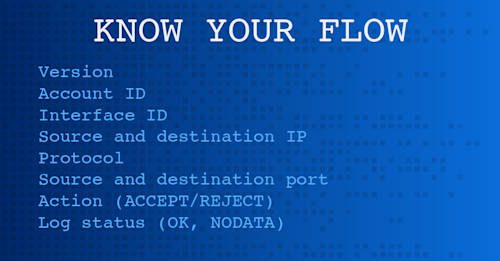CloudWatch Alternatives: Enhancing Multicloud Network Observability
Amazon CloudWatch is a commonly used monitoring and management tool for organizations running workloads on Amazon Web Services (AWS). It enables users to collect metrics, logs, and events from various AWS services, providing a baseline level of visibility into resource performance and application health. However, as businesses scale their infrastructure or adopt hybrid or multicloud models, relying solely on CloudWatch may not meet all their monitoring and observability needs. Many teams begin searching for a “CloudWatch alternative” that can offer deeper data insights, better performance, more flexible analytics, and support for non-AWS environments.
What is Amazon CloudWatch?
Amazon CloudWatch is AWS’s native solution for monitoring and observability within the AWS ecosystem. It allows you to track resource usage, application metrics, and system logs from services like EC2, Lambda, RDS, and more. CloudWatch integrates easily with other AWS offerings, making it a natural first choice for organizations starting their cloud journey. By default, CloudWatch provides basic performance metrics, alerting capabilities, and log collection, helping teams identify potential issues and maintain operational stability in their AWS environments.
Strengths of Amazon CloudWatch
Despite its limitations, Amazon CloudWatch offers several advantages that make it an appealing starting point for many organizations, particularly those operating primarily within the AWS ecosystem:
-
Seamless AWS Integration: As a native AWS service, CloudWatch automatically connects to a wide range of AWS offerings (e.g., EC2, Lambda, RDS) without requiring additional plugins or extensive configuration. This reduces the onboarding effort and allows teams to begin collecting metrics right away.
-
Wide Range of Metrics: CloudWatch provides comprehensive visibility into various aspects of your AWS environment, including compute resource utilization, storage performance, database health, application-level metrics, and more. This breadth of data helps teams establish a baseline understanding of their AWS workloads.
-
Initial Ease of Use: For organizations already committed to AWS, using CloudWatch often involves just a few clicks in the AWS Management Console. Its dashboards and alerts can be set up relatively quickly, enabling teams to investigate performance issues or anomalies without a steep learning curve or context-switching.

Limitations of Amazon CloudWatch
As environments grow more complex, CloudWatch’s basic capabilities may not fully address emerging needs. Common challenges include:
-
AWS-Centric Visibility: CloudWatch is purpose-built for AWS, limiting practical visibility when you integrate data from other clouds or on-prem infrastructure. For hybrid or multicloud strategies, you may need additional pipelines or tools, increasing both complexity and cost.
-
Workflow Complexity: Querying and exploring log data across multiple AWS accounts at the same time is not possible in Cloudwatch, and so must be done repetitively in each account, with aggregation done manually. Alternatively, CloudWatch data can be sent to Athena for cross-account queries, but this requires complex multi-step setup, incurs additional cost, and suffers from performance limitations for queries on telemetry from large-volume traffic.
-
Lack of Deep Data Enrichment: While CloudWatch collects flow logs and metrics, it does not inherently enrich them with external context, such as BGP routing data or application-level tags. Without this depth, it’s harder to fully understand network behaviors, identify top talkers, or pinpoint the root causes of performance issues.
-
Coarse Granularity and Complex Analysis: CloudWatch often operates at coarse time intervals (e.g., one-minute metrics) and does not natively provide refined analytics. Achieving more detailed insights frequently involves bringing in other AWS services (like Athena and Glue) or exporting data to external platforms. This adds operational overhead and makes it harder to quickly spot nuances in traffic patterns or troubleshoot advanced scenarios.
-
Unpredictable Costs at Scale: As you expand your cloud footprint and begin analyzing larger datasets or running more frequent queries, CloudWatch costs can rise unpredictably. For log analysis, AWS charges users threefold: per-TB to store logs, per-TB to deliver or “ingest” them to CloudWatch, and then per-TB to analyze them. These metered billing models, especially for iterative queries, long-term data retention, or high-cardinality telemetry like flow logs, significantly drive up expenses.
While Amazon CloudWatch can be a useful baseline tool, its limitations become apparent as organizations seek unified multicloud visibility, richer context around network flows, more granular analysis, and cost-effective scalability.
Why Look for a CloudWatch Alternative?
As enterprises move to hybrid- or multicloud strategies, monitoring tools need to be more flexible and data-rich. Teams may want a CloudWatch alternative to:
- Optimize Costs: Move away from usage-based billing models that become cost-prohibitive at scale, seeking more predictable pricing structures.
- Achieve Multicloud Visibility: Gain a unified view of traffic, performance, and dependencies across AWS, Google Cloud, Azure, on-premises environments, and more.
- Attain Deeper Insights: Enrich raw logs and metrics with contextual information (e.g., BGP data, autonomous system mappings, or metadata tags) for more meaningful analysis.
- Reduce Complexity: Streamline the analysis process without juggling multiple AWS services or resorting to manual data stitching.

Key Capabilities to Consider in a CloudWatch Alternative
When evaluating alternatives to CloudWatch, consider the following features:
- Multicloud and Hybrid Cloud Environment Support: Ensure the platform can ingest data from various cloud providers and on-prem networks, offering a truly unified observability layer.
- High Performance and Scalability: Look for solutions that can handle large datasets efficiently, ensuring responsive queries and fast analysis even in complex environments.
- Rich Data Enrichment: Choose a tool that make telemetry useful and actionable. Enrichment contextualizes telemetry for faster investigation, optimization, and root-cause analysis.
- Flexible Querying and Analysis: The ability to easily slice, dice, and pivot on data points encourages in-depth investigation without cumbersome setups.
- Predictable Pricing: Consider platforms that offer straightforward pricing models, avoiding hidden costs tied to data volume, ingest, query frequency, or multi-tool workflows.
Kentik: A Powerful Complement and Alternative to CloudWatch
Kentik is a network observability platform designed for large-scale modern network environments. While it complements CloudWatch’s AWS-centric metrics, Kentik also serves as a powerful “CloudWatch alternative” by addressing its key limitations:
- Full Multicloud Visibility: Kentik integrates seamlessly with AWS VPC flow logs, as well as flow data from other cloud providers and on-prem networks. This gives you a single pane of glass for understanding traffic patterns and dependencies, wherever they reside.
- Advanced Data Enrichment: Kentik adds context-rich metadata (e.g., BGP routes, AS numbers, tags) to raw flow logs, turning raw metrics into actionable insights. With this enrichment, teams can quickly pinpoint performance bottlenecks, security issues, or network inefficiencies.
- Fast and Actionable Analytics: Purpose-built for analyzing network data at scale, Kentik’s platform eliminates the slow queries and complex configurations often associated with piecing together AWS services. You can drill down to specific events, top talkers, or suspicious activities with ease.
- Predictable, Flat-Rate Pricing: Kentik’s pricing model offers predictability, helping teams avoid unexpected spikes in monitoring costs. This enables more sustainable scaling as your network footprint grows.
- Unlimited Queries: Kentik delivers AWS traffic observability by ingesting flow logs from S3, the cheapest place to vend them in AWS. Once the logs are in the Kentik platform, users can investigate with unlimited access to the telemetry within the retention period.

In a scenario where organizations rely on CloudWatch for basic AWS metrics, Kentik provides the advanced capabilities that fill in the gaps, ensuring you don’t have to switch between tools or wrestle with complex AWS integrations for deeper insights.
In this quick demonstration, Phil Gervasi explains how Kentik provides network engineers with comprehensive visibility across hybrid and multicloud environments. Learn how Kentik ingests and visualizes data from various sources including public clouds, SaaS providers, private data centers, and more. Phil shows how you can drill down from a high-level overview to granular details such as specific IP addresses, VPC traffic, and performance metrics:
Other Alternatives to CloudWatch
Organizations exploring a “CloudWatch alternative” often consider a range of other monitoring and observability solutions. While these tools can add value and address certain gaps, their capabilities, focus, and ease of integration can vary significantly. Here are a few common alternatives and how they compare in focus and functionality.
Datadog
Datadog is a popular cloud monitoring and analytics platform that provides visibility into infrastructure, applications, logs, and user experience. It integrates easily with AWS and many other services, offering dashboards, alerts, and APM features.
How is Datadog a CloudWatch Alternative?
Datadog extends beyond AWS-centric metrics, pulling in data from a wide range of technologies (containers, microservices, third-party APIs), and can operate across hybrid and multicloud environments. Compared to CloudWatch, Datadog delivers more polished visualization tools, better correlation across layers of the stack, and richer analytics features.
Datadog excels at broad application-level monitoring and correlating infrastructure metrics and APM data. However, it lacks Kentik’s specialized focus on network observability, detailed flow analysis, and deep data enrichment that surfaces routing behaviors, traffic patterns, and external context (like BGP data). This limits its ability to surface important insights into egress and transit, required for effective cost analysis. For teams primarily concerned with the network layer, Kentik provides more targeted insights.
New Relic
New Relic focuses on application performance management, end-user experience, and infrastructure visibility. It offers a suite of tools to monitor distributed applications, microservices, and serverless architectures.
How is New Relic a CloudWatch Alternative?
New Relic can ingest CloudWatch metrics and integrate with AWS services, but it also supports other cloud platforms and on-prem systems. By adding application-centric insights and performance metrics, it can replace or augment CloudWatch’s basic metrics with more holistic observability of the application stack.
Like Datadog, New Relic provides application performance troubleshooting and code-level instrumentation. But it doesn’t provide Kentik’s robust network-centric analytics, route-level visibility, or external data enrichment. For detailed analysis of network flows, dependencies, and capacity planning, Kentik is better suited.
Prometheus and Grafana
Prometheus is an open-source metrics collection and alerting toolkit, often paired with Grafana, an open-source visualization platform. Together, they let teams build custom dashboards, query metrics with PromQL, and create flexible data visualizations.
How are Prometheus & Grafana CloudWatch Alternatives?
Prometheus and Grafana can pull metrics from various sources, including exporters for AWS services. This makes it possible to replicate or enhance CloudWatch’s metrics with custom scraping, longer data retention, and more advanced graphing. Many organizations adopt these tools to gain open-source control over their monitoring stack, move beyond AWS-only data, and tailor dashboards extensively.
Prometheus and Grafana are powerful, but they require setup, maintenance, and expertise in managing and scaling the monitoring infrastructure. While they enable rich customization, they don’t inherently offer Kentik’s advanced network data enrichment or pre-built workflows for analyzing complex traffic patterns. Kentik provides a managed, purpose-built solution that reduces operational overhead and offers immediate, in-depth network insights without the DIY complexity.
Splunk
Splunk is a data platform designed for analyzing logs, metrics, and event data from diverse sources. It’s often used for security analytics, IT operations, and business intelligence.
How is Splunk a CloudWatch Alternative?
Splunk can ingest CloudWatch logs and metrics, correlate them with other data sources, and provide powerful search and analytics capabilities. This can help teams go beyond AWS metrics alone, uncovering insights in logs from multiple environments.
Splunk is a broad data analytics tool rather than a specialized network observability solution. While it excels at handling large volumes of machine data, it doesn’t offer the same network-specific enrichment and real-time analytics that Kentik delivers. Furthermore, customers cite high costs as a barrier to using Splunk for traffic investigations and optimization. For organizations that need deep visibility into network performance, traffic patterns, and cross-cloud dependencies, Kentik’s focus on network observability provides more targeted value and is more cost-effective.
Kentik vs Other Alternatives
These alternatives each address some limitations of CloudWatch, offering broader data sources, improved visualization, or richer analytics. Yet, most are general-purpose observability or analytics tools rather than specialized platforms for network-focused insights.
Kentik sets itself apart by delivering a unified, enriched, and network-centric perspective—focusing on how data travels within and between clouds, understanding routing, identifying top talkers, revealing hidden dependencies, and highlighting easy opportunities to lower connectivity costs. As a result, Kentik stands out as a “CloudWatch alternative” for teams seeking to not only monitor their cloud environments but also deeply understand and optimize the underlying network layer that drives their digital infrastructure.
Just one way that Kentik can help optimize AWS environments is by identifying idle resouces. Network engineer Phil Gervasi shows how in this short video demo:
Learn More About Kentik as an Alternative to CloudWatch
Amazon CloudWatch is an important building block for AWS observability, but as your infrastructure scales or you adopt hybrid- or multicloud strategies, you may need a CloudWatch alternative that delivers greater ease of use, deeper insights, flexible analysis, and more cost-effective operations.
Kentik excels in these areas, providing a unified, enriched, and high-performance view of network traffic and dependencies across all your cloud environments. By complementing or replacing parts of CloudWatch-centric monitoring stacks, Kentik empowers teams to better understand their complex networks, optimize performance, reduce troubleshooting times, and ensure a more predictable cost structure.
For organizations ready to evolve beyond basic AWS visibility, Kentik represents a compelling and feature-rich CloudWatch alternative that helps achieve comprehensive, next-level network observability. To see how Kentik can bring the benefits of network observability to your organization, request a demo or sign up for a free trial today.


